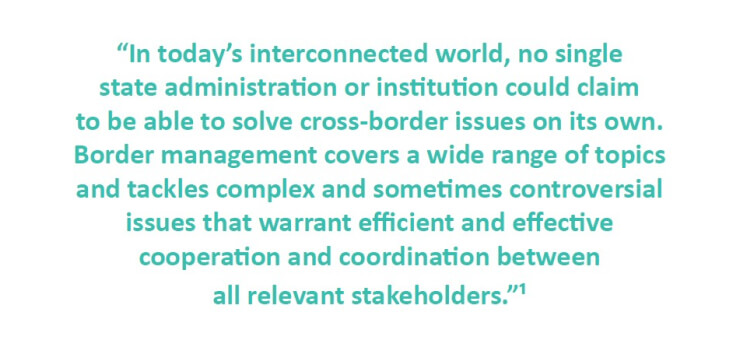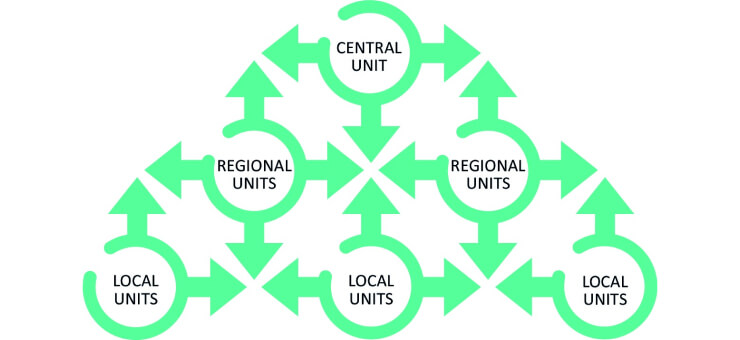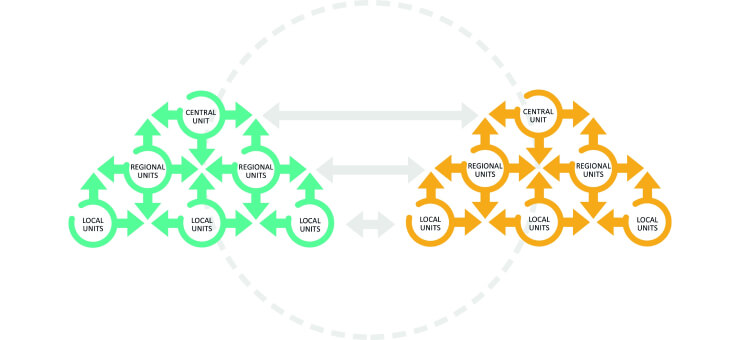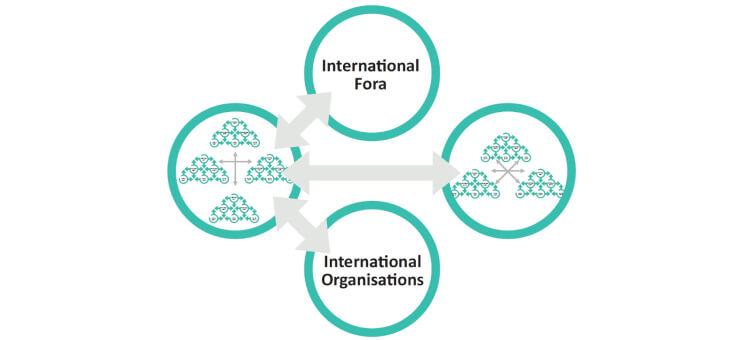The Integrated Border Management (IBM) concept calls for cooperation and coordination between all actors involved in border management at the national and international level. By improving communication, information exchange and mutual assistance of and between border authorities, the state border can be managed more effectively and efficiently.
The IBM concept aims at simultaneously enhancing trade facilitation and ensuring a high level of border security.

The Budapest Process is an inter-regional dialogue on migration stretching from Europe to the Silk Routes region (Afghanistan, Bangladesh, Iran, Iraq and Pakistan) also covering Europe’s Eastern neighbours, the Western Balkans and Central Asia.
Founded in 1993 the Budapest Process is Europe’s leading and longest-standing dialogue on migration. We have built up a far-reaching network among participating and observer states as well as a wide thematic coverage. The Budapest Process also offers practical support to countries within the Silk Routes Project by offering a platform for learning and training between peers as well as for facilitating concrete project development and cooperation.
The Budapest Process is an inter-regional dialogue on migration stretching from Europe to the Silk Routes region (Afghanistan, Bangladesh, Iran, Iraq and Pakistan) also covering Europe’s Eastern neighbours, the Western Balkans and Central Asia.
1. Intra-service
cooperation (within a service or ministry)

2.Inter-agency
cooperation (between different ministries or border management agencies)

3. International cooperation
(with other countries and international organizations)

While the IBM Concept is based on these principles of cooperation and coordination is it also based on a spatial approach, split into four different areas or tiers where access control measures are applied. This allows a fully-fledged IBM concept to address all forms of border management activities that take place at the physical border zone, as well as either side of it.
The four spatial tiers of access control that IBM focuses on implementing measures are:
- Measures within the country;
- Border control measures conducted in the border region;
- Cooperation with neighbouring countries;
- Measures in third countries.
Based on the three pillar approach of cooperation and coordination, work on establishing and implementing an IBM approach at the national level should take place across six main fields. All of the fields are addressed in some form by the IBM Silk Routes project.
The six fields of IBM
1. Legal and regulatory framework:
Ensuring the legal basis for cooperation and information exchange.
2. Institutional framework:
Developing or supporting an organisational setting for introducing IBM.
3. Procedures:
Procedures and processes required for cooperation to take place.
4. Human resources and training:
Recruitment and educational or training issues.
5. Communication and information exchange:
Creating a standardised and efficient flow and exchange of information.
6. Infrastructure and equipment:
Recommending how equipment and facilities can support cooperation and coordination at all levels.
